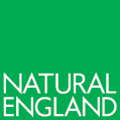Staffordshire's National Nature Reserves
Published 31 October 2008
Applies to England
Aqualate Mere
Aqualate Mere NNR is situated 3 kilometres to the east of Newport, at the heart of a private estate, centred on Aqualate Mere - the largest natural lake in the West Midlands.
Main habitats: open water, reedbeds, rush pasture.
Features of interest
This site is designated under Ramsar as an internationally important wetland reserve for its habitats and overwintering wildfowl populations. Wildlife can be viewed in close quarters from the public observation hide at the eastern end of the 72 hectares Mere.
The mere supports a diverse fish population, in particular pike and bream, and large numbers of wintering and breeding wildfowl.
Duck present on the Mere in the winter include mallard, teal, wigeon, pochard, tufted duck, goldeneye, and gadwall.
Aqualate supports a large heronry that has been on site for over 300 years. The reedbed habitat also supports reed warbler, sedge warbler and reed bunting with the occasional visiting marsh harrier and osprey. The site also sees large murmurations of starlings at dusk in the winter months.
The low lying pastures at the east and west of the reserve provide breeding areas for lapwing, curlew, snipe and redshank. Hunting barn owl and buzzard are also seen regularly over these fields.
Mammals found here include otter, polecat, stoat, water vole, yellow-necked mouse, harvest mouse, and bats such as pipistrelle and Daubenton’s.
See the site visitor leaflet for more details. Please note that wheelchair users cannot access the bird hide from the public car park as the leaflet suggests.
Directions
Newport is on National Route 55 and Regional Route 75 of the Sustrans National Cycle Network, and the reserve is 1.5 km north of an easy-access trail, the Way for the Millennium. There is a bicycle rack in the car park
The nearest train station is Stafford
Bus services from Newport along the A518 are provided by Arriva Bus Midlands.
Aqualate Mere is 2 km east of Newport. Access to the reserve car park is via minor roads from the A518, A519 and A41. There is space for 10 cars only.
Approaching from north, south or west leave the A41 at Newport onto the A518 in the direction of Stafford. Proceed along A518 for 1.5 miles; pass a golf course on the right, Aqualate Park on the left. Turn left down Guild Lane, signposted towards Sutton. The car park is 0.5 miles down the Guild Lane on the left.
Approaching from Stafford/ Gnossal turn right off the A518 before reaching Coley Mill, down Guild Lane, sign posted towards Sutton.
Contact
For more information about this reserve, or to discuss volunteering opportunities, contact Paul Shires (Senior Reserve Manager for Staffordshire and Cheshire NNRs) on 01952 812111 or email paul.shires@naturalengland.org.uk
Chartley Moss
Chartley Moss NNR is the largest example of a floating peat bog, or schwingmoor, in Britain. The sphagnum lawn supports important botanical communities adapted to grow in this hostile environment. These plants in turn support a a large number of invertebrates.
Main habitats: peatland
This site is extremely unsafe without an experienced guide and the habitat is very fragile. Access is restricted to a few specially arranged events each year.
Contact
For more information about this reserve, or to discuss volunteering opportunities, contact Paul Shires (Senior Reserve Manager for Staffordshire and Cheshire NNRs) on 01952 812111 or email paul.shires@naturalengland.org.uk.
Hulme Quarry
This area features heathland, woodland, grassland and scrub, as well as a number of small pools and geological features.
Main habitats: geological, grassland, heathland
Management: Hulme Quarry reserve is owned and managed by Stoke-on-Trent City Council in association with Natural England.
Features of interest
Stoke City Council maintain all of the geological exposures, keeping them free from vegetation, in addition to managing the areas of grassland, heathland and woodland on the reserve. The wider country park has an extensive network of footpaths.
Further information about the NNR, its wildlife and how to visit can be found on the Park Hall Country Park website.
Contact
Senior Ranger
Park Hall Country Park
Hulme Road
Weston Coyney
Stoke-on-Trent
ST3 5BH
Telephone: 01782 331889
Mottey Meadows
Mottey Meadows National Nature Reserve is one of the best examples in the UK of wildflower rich floodplain meadows. The reserve is made up of a series of alluvial flood meadows which have been managed as hay meadows for many centuries.
Main habitats: lowland grassland
The site is limited to permit holders only apart from guided walks.
Features of interest
The reserve’s grassland supports over 240 species of flowering plants and grasses.
Plants such as common meadow rue, yellow flag iris and water mint may be seen in the ditches and in the wetter meadows you will find cuckoo flower and marsh marigold.
The site supports a number of invertebrate species, including many species of butterflies and the rare horsetail weevil. Mottey Meadows is also home to breeding birds such as snipe, curlew and lapwing.
Directions
The nearest train station is in Penkridge, 8 kilometres to the east.
Bus services run between Penkridge and Wheaton Aston. See the Traveline West Midlands website for details.
By car, access to the site is via minor roads from the A5, A41, A449 and A518.
The site is 2 kilometres north of the A5, 0.5 kilometres south of Marston village and 1 kilometres west of the town of Wheaton Aston.
Contact
For more information about this reserve, or to discuss volunteering opportunities, contact Paul Shires (Senior Reserve Manager for Staffordshire and Cheshire NNRs) on 01952 812111 or email paul.shires@naturalengland.org.uk

